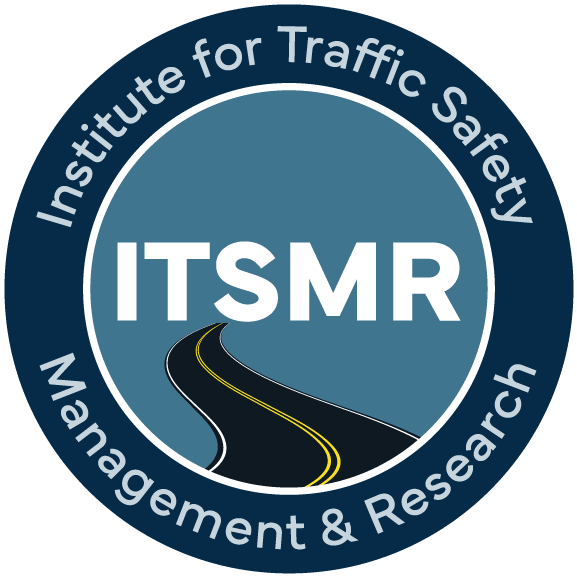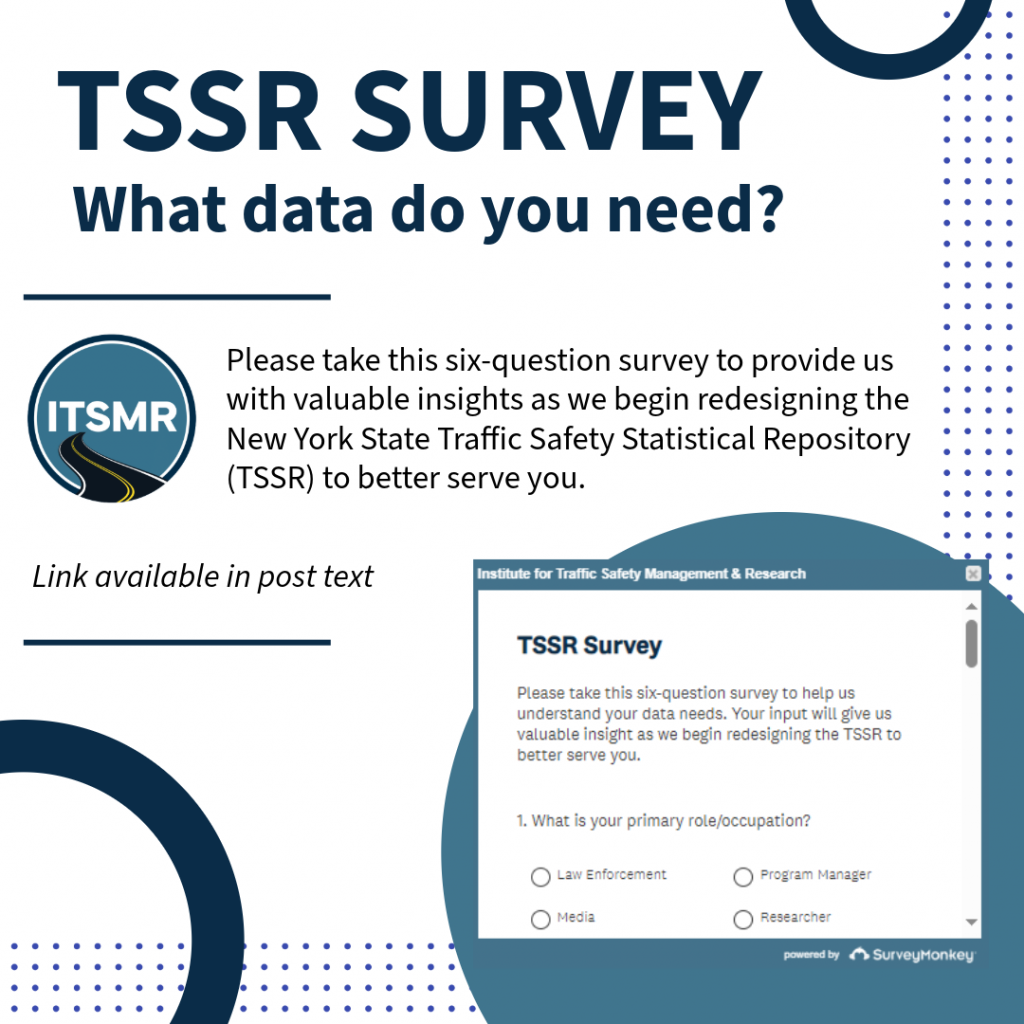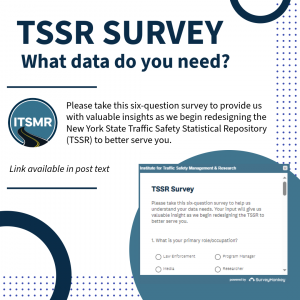Do you utilize the New York State Traffic Safety Statistical Repository (TSSR)? What data do you need? Please take this six-question survey to provide us with valuable insights as we begin redesigning the TSSR to better serve you. Complete the survey at: https://www.surveymonkey.com/r/8RZX7YK
News / TSSR
Please take this six-question survey
ITSMR team launched a ‘New York State Fatality Data Dashboard’ in TSSR! Users can access the dashboard along with the existing crash and ticket reports in TSSR by clicking on the TSSR in the website menu. The purpose of this dashboard is to provide users with quick access to visually presented fatal crash statistics at both state and county levels for a rolling five-year period. Users can select the counties they are interested in using the county filter. The dashboard presents visualizations that include total fatalities, fatalities by role and fatality related to risky behavior.
No results found.


